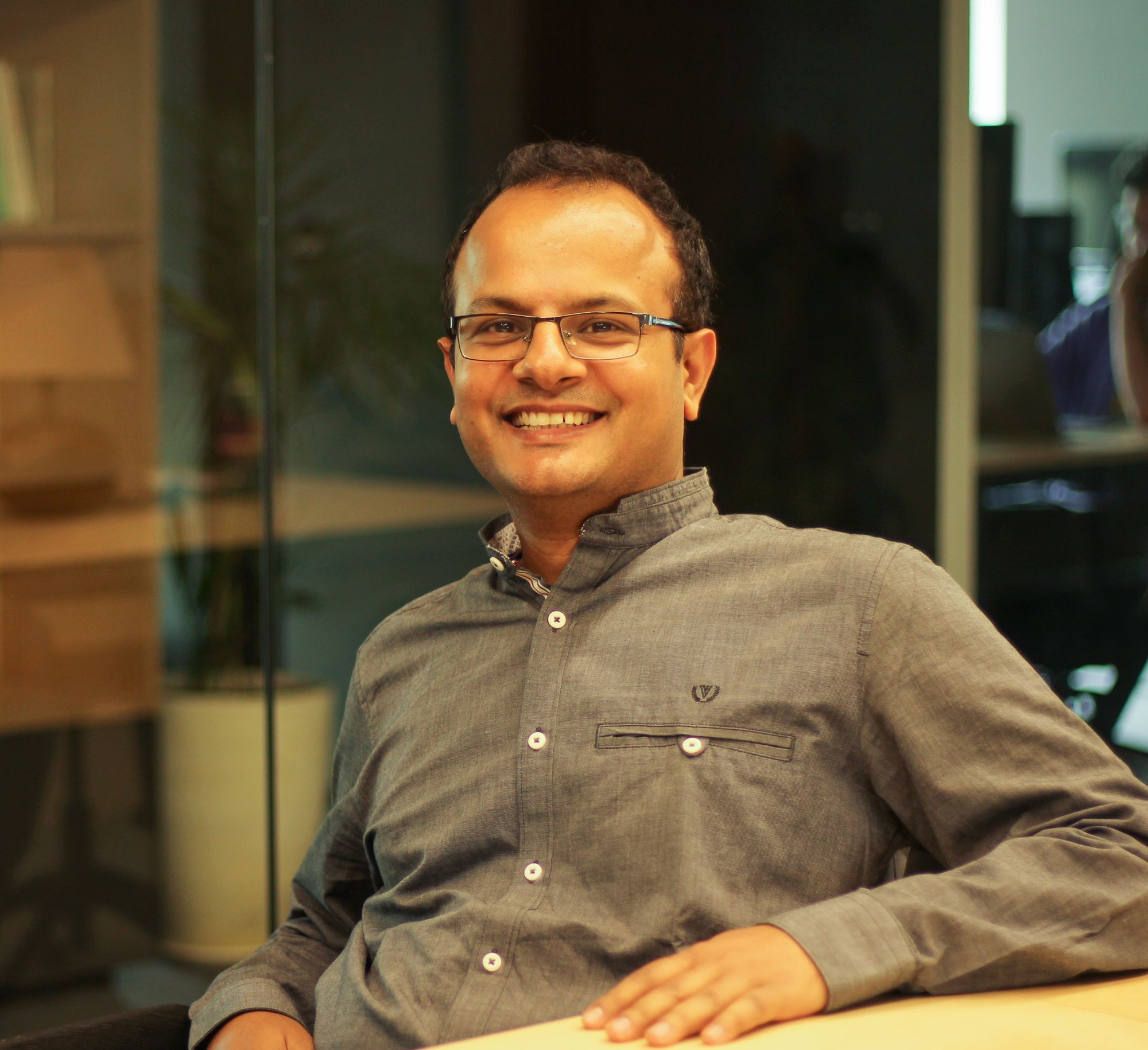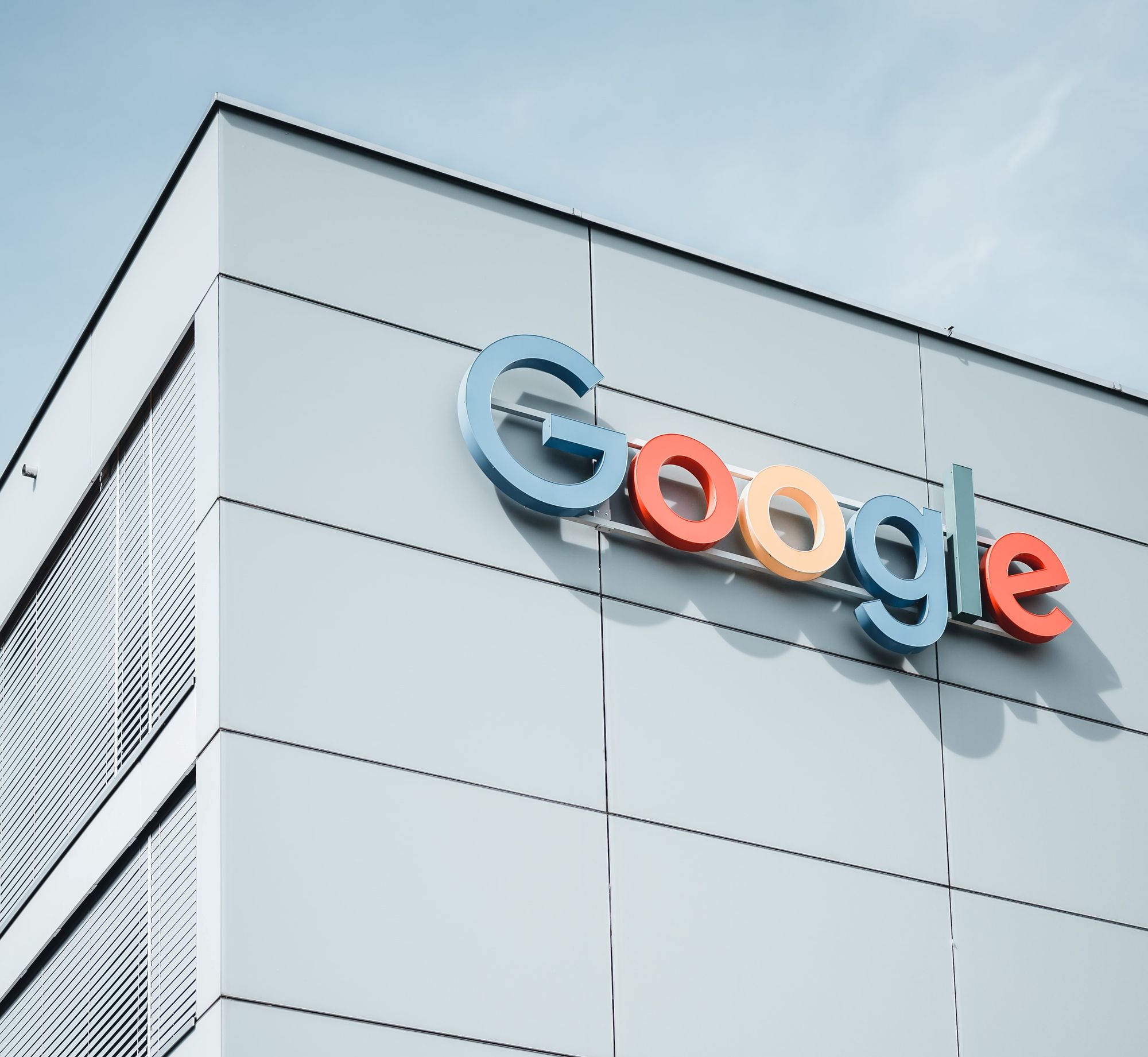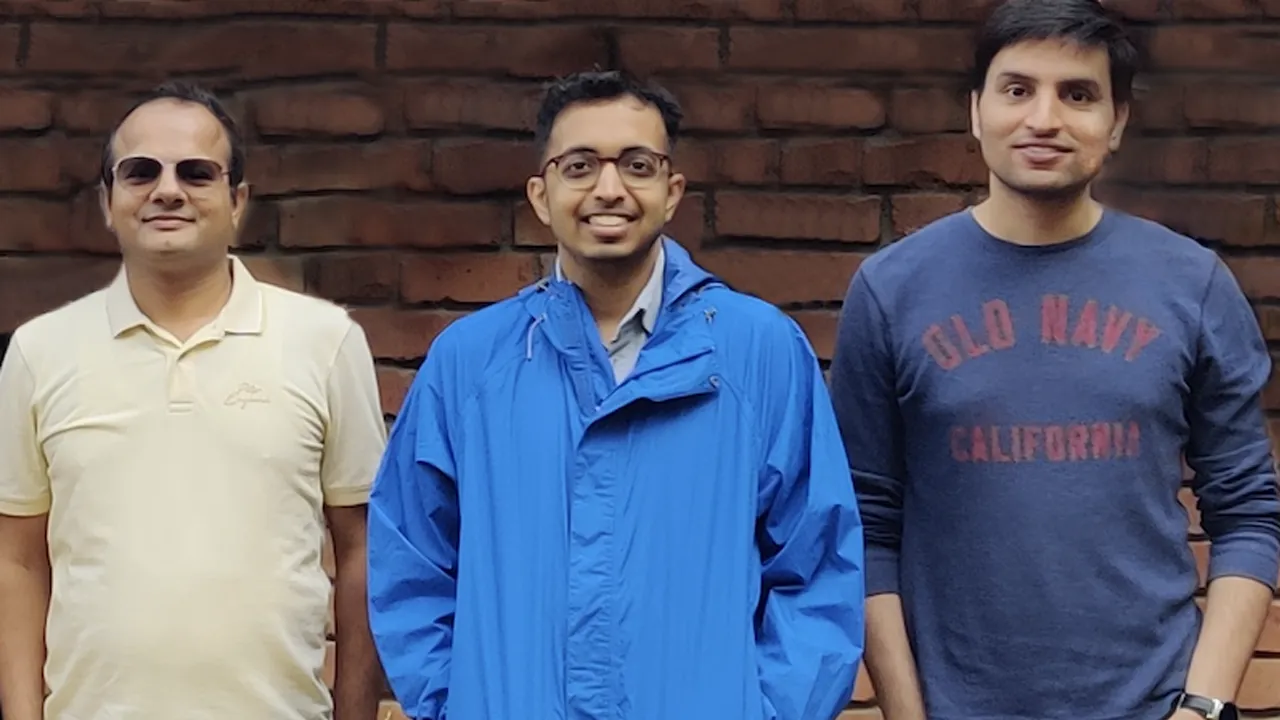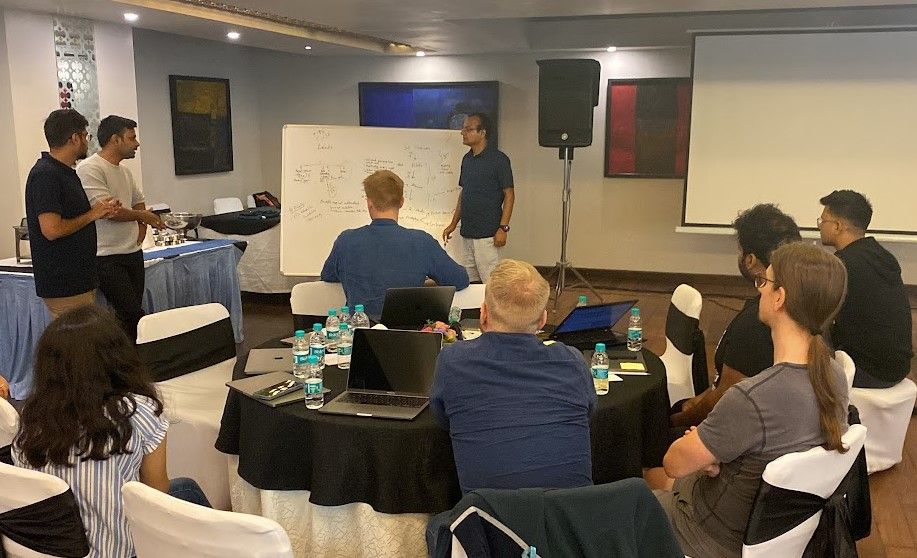Meet the Team #3: Ankur Gupta (Building loads of things, all the time, in every direction 🛠️)

In our third Meet the Team interview, we speak to Ankur Gupta, one of Clarisights' co-founders, Tech leads and the human wiki into our codebase. In this interview, we explore Ankur's backstory (including his enduring love of Google), discover how Clarisights began, and discover where the rocket ship is going next🚀!
Clarisights Journal (CJ): Hi, Ankur! What do you do at Clarisights?
Ankur: Hello! I'm a co-founder. When I started I worked more like the senior engineer of the team, but now I'm in more of a leadership role.
CJ: What was your path to Clarisights like? Where did you start?
Ankur: After my B. Tech, I was considering doing a PhD. My older brother was doing a PhD from UIUC in electrical engineering. So he was an inspiration to me. But I didn't immediately realise what a challenging time it was to apply for PhDs in the US. This was in 2002. So right after both the dotcom crash and 9/11. I applied to eight different universities and then kept waiting and waiting to hear back from them. It was really nerve-wracking but, eventually, I got a fellowship from UT Austin.
I spent two and a half years there. It was fun. But I came to realise that academia is not my cup of tea. So I decided to move on. I finished my master's and then applied to a bunch of companies: Google, Microsoft… all the usual suspects. Fortunately, I got through all of them. But I was very, very clear then that Google was where I wanted to be. So that's how I ended up at Google.

CJ: Tell us about your time at Google!
Ankur: When I started, I was part of a product called Google Base. It went on to become something of a failed experiment. Google Base was like a database for semi-structured data for many different business verticals. Over time Google realised that each of these verticals had its own nuances. And a generic UI doesn't make sense. I spent a couple of years on that team. At that time, 99.9% of Google's revenue came from search ads. I noticed this and thought: Why not try my hands at ads? So, I joined the backend team in the Search Ads group.
I got a lot of exposure to the ads business, both as a product and in engineering. I was there from 2005 to 2011. This was when many people would work at Google for a few years and then go off to do their own things or join startups. This never even crossed my mind. In my mind, I was going to work at Google forever. Around 2010 or 2011, though, I realised how much the company had grown. And how much more political the organisation had become. And it just felt like I was a tiny fish in not just a pond but in an ocean!
I felt like I needed a change. I also decided to move back to India. I didn't leave Google immediately. I joined Google Bangalore, but in 2012 I decided I wanted to move on. I wanted to try founding a startup, but it was a big unknown. So I thought, okay, let me at least clear one milestone, which is to get out of Google.
Next, I went to work for Walmart Labs. I led the Affiliates Marketing team, which was also related to ads. However, coming from Google, Walmart Labs was a bit of a culture shock. Google, shall we say, really pampered its people. But then, after a year, I decided to leave Walmart Labs. With no plan at all for what to do next. For the next six months as an engineer, the only ideas that came to my mind were more consumer-facing ideas. Concepts like the Bigbaskets of the world. I wrote multiple docs outlining what these products could look like.
But, in the end, I realised that these were all operations-heavy projects and not something for a lazy person like me! And because I wasn't making much progress in those six months, I joined a group called TiE Bangalore. One day, they emailed me that some MIT Media Lab folks were organising a startup lab programme in Bangalore. And I was lucky that it was in the same locality as my house back then, so it was an easy trip. I grabbed the opportunity! Most folks there were fresh out of college, except for one guy. No points for guessing who that was: one Arun Srinivasan.

CJ: Could you tell us how meeting with Arun led to Clarisights?
Ankur: Arun understands the problem that marketers have like no one else. For me, it was a B2B problem. But Arun saw things differently. So in the initial three or four months, we used to just walk and talk whilst in an existential crisis mode: 'What are we doing? How will we do it?' But then, eventually, Arun took me to one of the customers, and I saw firsthand the problems she was facing. She was a campaign manager. That's when I said, okay, enough analysis paralysis! Time to build something. That's how AdWyze, a digital marketing automation and optimisation platform, kicked off.
Those were the seeds of Clarisights. But the actual realisation, the clarity that led to Clarisights, only dawned on us a little slowly. As we spoke to customers, especially international customers, we realised we needed to get rid of the extra baggage associated with AdWyze, especially all the marketing automation, because it always felt like whatever we were doing, eventually either Facebook or someone else will do it. So we had to ask ourselves: Will we be relevant five years down the lane? If Facebook goes down, will AdWyze exist?
That is how we started working on the core reporting problem with laser focus, which would later grow into Clarisights.
When we started, we were solving problems but also having fun. But in the last couple of years, we've had to focus on delivery. We still have fun, but there has been a necessary transition. It is no longer what Arun used to call a "Punjabi wedding"– an expression which basically means something that is not very planned, something very disorganised. Still, it works out incredibly well in the end.
In the early days, it wasn't about planning; it was all about following Arun's intuition. He has an incredible intuition. But over the years, we have all realised that we need some planning and everything can't be last minute. Now, the company is going through a phase of processifying everything: Bringing structure to hiring and structure to issue management, amongst other things. We are embracing change and growth.
CJ: How would you define yourself as a software engineer right now? What are you most passionate about?
Ankur: I enjoy problem-solving. It's not about writing the best code, design, or architecture but about understanding customer problems and then building a solution that works for them. It's best not to overthink whether it'll work for 1000 customers but instead focus on whether I can make it work for this customer. At the same time, it is important not to build something too specific to that customer. It's all about balance.

CJ: When you look at everything that's happened and Clarisights today, you must feel very proud.
Ankur: Absolutely. We've seen a lot of ups and downs. There were times when we had no money or faced the threat of shutting down. It was almost like dangling from a cliff edge. We were about to die, but somebody finally pulled us back up at the last moment. Or, we made sure we pulled ourselves back up.
That kind of crisis happened twice. Once, the entire company left. Everyone! The second time, only one person decided to stay back. Everyone else left. And by that time, we had customers, paying customers! So my head was on fire. Everything was on fire. What do you do in that kind of situation? How do we serve customers without enough people? I had to focus on hiring as well as having to attend to everyday issues and firefighting. That is the reality of a startup. It happens. But, to be honest, the challenge made it fun even though it was hard.
CJ: Do you remember a specific engineering issue from that time?
I remember one customer presented us with a flat file with some dimensional breakdown, and nothing in our existing system could digest that file. I realised this was not specific to this customer but a broader problem. Our data model was such that I could not figure out how the damn thing worked. And so it required some out-of-the-box thinking. I was really proud of the outcome. I know that the name "POD" doesn't work with the rest of the community, especially our customers but, for me, "plain old data" is a perfect way to express "I need to be able to ingest this data".
CJ: Is that what it stands for? Plain old data?
Ankur: Yeah. I gave it that name.
CJ: Very cool. Clarisights has grown exponentially recently. What have you learned in this period of transition?
Ankur: I've had to learn a lot. I would say; initially, I was just too passionate. I'd be like: 'we have to do, we have to do, we have to make something, LET'S GO LET'S GO GO GO' – I used to lose my patience. So people would be scared of me. But over the years, I realised I needed to have more patience.
CJ: What was it like founding a company?
Ankur: Building loads of things, all the time, in every direction! We were just trying to chase product market fit at the zero to one phase. While Arun and I had ideas about where we wanted to go, we didn't have a map or path clear in our heads at all. We didn't.
Initially, I used to think, 'okay, if I build this, then we'll get customers'. But, to my surprise, I built it, and we still didn't have customers! The significant change was speaking to customers and understanding their problems. From there, we started to understand what we were building. And we failed multiple times. That was significant learning for me: We can try many things, and if it fails, it's okay.
The big change was speaking to customers and understanding their problems. From there, we started to understand what we were building. And we failed multiple times. That was a big learning for me: We can try many things and if it fails, it's fine.
Delivery Hero was the turning point. After Delivery Hero, we started asking: How can we make this customer happy? That's when things truly changed. This was a huge customer with very high expectations. We had to be careful about what we were pushing out. So it's not that we didn't have customers before Delivery Hero, but, as a customer, Delivery Hero pushed us to get better at what we do.
CJ: Do you miss that period of testing random things now that things are more stable?
Ankur: I think we should always make space for experimentation and be okay with these experiments failing. That's why I find Google an inspiration. Google tried a hundred things, and not all of them worked. We are talking about millions of dollars being wasted, but that's okay in the grand scheme. I am talking about moonshot projects. As Clarisights keeps growing, we should never stop trying new things. Fear of failure shouldn't hold us back.
CJ: What do you look for in a sound engineer as a hire?
Ankur: First: passion and energy. That is one of the most important things. I should feel their passion. If I don't feel there's passion, then I don't care what the tech skills are. Second: How much hunger do they have to make things? I'm reminded of two of our engineers, Prashant and Neel. When they joined, they were raw but passionate and hungry to build and grow. They've been with us for six years now. Passion is key.

CJ: What would you say the core vision, mission and values of Clarisights are?
Ankur: In a word, collaboration. How can we build something collaborative that can solve the data silos problem for marketing teams, whether it be performance marketing teams or other teams? They need an easy-to-use tool to focus on what they want from the tool rather than how to get things done. How do you pull the data you need out? How do you make your data work for you?
Excel is a great analogy. Excel is very flexible and easy to use. It's just that it doesn't scale, and you still have to do plumbing to get things into Excel. Clarisights solves that. The key is collaboration in our teams and in our relationship with customers.
CJ: What do you think Clarisights will look like in five years?
Ankur: I don't know where we'll end up, but I think we have found a good niche and a good problem to solve. Right now, there are very, very few players who are thinking about this paradigm shift. Sometimes it gives me goosebumps thinking about it: If you look at the modern data stack, we are going against that. We are challenging how a whole industry works. The modern data stack is being worked on by companies which are funded by A16Z. So it gives me goosebumps. I feel very strongly that we are in the right direction, but whether we will win this space or someone else will, only time will tell.
Sometimes it gives me goosebumps thinking about it: If you look at the modern data stack, we are going against that. We are challenging how a whole industry works.
When a company like Delivery Hero tells us what we have been able to give them, it's fantastic. They especially appreciate it because they were trying to do something similar to Clarisights internally. They even created a spreadsheet comparing Clarisights with their internal BI, plus whatever tools they were using: Supermetrics, Funnel and many others. We came up on top. In fact, we used that comparison when we decided to raise capital. Investors asked: How are you different from your competitors? And we could say, "We don't need to do that because one of our customers has done that analysis for us!"
CJ: If you weren't an engineer, what would you do?
Ankur: I am very passionate about astronomy. I remember in my college days, in Kanpur... in winter, when it was freezing. There was an airstrip which was very close to a forest nearby. We had binoculars and a telescope. This is 2000, so no mobile phones, no fancy gadgets. We just had those star charts. We were able to see multiple galaxies. Andromeda was one of them. I spent an entire night by that airstrip looking at the stars.
A more recent hobby: I've started investing in many other startups in the last three or four years!
CJ: Do you still use a lot of Google products? Are you a passionate Google user?
Ankur: All my data is on Google Drive! My bookmarks are backed up in Google Drive and Chrome. Even though now, I have started hating Chrome because I have a terrible habit of opening many tabs, and Chrome starts misbehaving. And I almost never kill the pages. So when Chrome becomes unresponsive, I have set up an alias 'KGC', which stands for Kill Google Chrome. And it will find the PID of Google Chrome and issue a kill -9 to that PID. It then saves all my tabs and everything. And as soon as it comes back, it asks if you want to resume. Yeah, sure. I'll resume. So then all my 50 tabs are back.
CJ: I have over 200 tabs open right now.
Ankur: Terrible. When I think about it, I am very disorganised, which is probably a reflection of that. My daughter is 10 years old, and for the last two years, because of COVID, she's been at home and doing schoolwork at home. So, she's been getting organised by putting labels on tabs, and she has grouped the tabs. I never knew this feature existed! So, now she is teaching me. Perhaps she will be an engineer one day.
CJ: Excellent. We could use a few people in our ETL team. Can you ask her to hurry up?
Ankur: Haha.
Clarisights is hiring! Go to careers.clarisights.com to check out what roles we are currently hiring for. We look forward to hearing from you!

